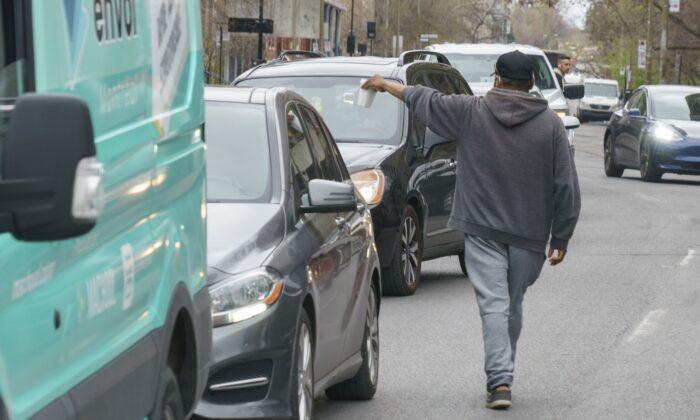Having grasped the COVID pandemic’s lucrative lessons in making money from fear, mainstream media is now pushing a tale of fright featuring a bug called monkeypox.
Before the long weekend, one news network reported a staggering three cases of the mysterious malady in Quebec, bringing the national total to a knee-buckling five. Another tabloid-headlined these figures as an “outbreak” of shock horror nightmare pestilence sweeping the True North Scared and Susceptible.
It should, in fact, be laughable. The brake on bursting out is the hear no evil/see no evil/speak no evil attitude of the media-politico complex to a terrible contagion truly ravaging urban Canada: the scourge of public mental illness. We have developed an affected blindness, particularly during the pandemic, to the social devastation of our cities and towns, which are now free roaming zones for the mentally distressed.
True, editors have always sent their newsrooms’ Sister Sob or Brother Boo Hoo on editorial slumming trips to visit the po’ side of town and crank out streaming paragraphs of romanticized cliché about the experience. The result is invariably an amalgam of gritty saints of the gutters and scalding denunciations of government failure to provide sky shouters with adequate shelter. It’s cheap ’n easy Saturday feature pap aimed at the mochaccino indignation crowd.
Rarely, if ever, does the media offer proper accounting of how we found ourselves in civic landscapes overrun with abandoned, broken, helpless, and increasingly aggressive human beings. Or as U.S. sociologist of mental illness Andrew Scull puts it: “The homeless and sidewalk psychotics are now part of the fabric of our cities.” None of us needs Scull’s half-century of intensive research on mental illness itself, and the plight of the urban mentally tormented, to recognize the truth of his words. We see it, we hear it, we experience it on streets, in subways and doorways, at bus stops, and virtually every part of urbanity every day of our lives.
Those not born yesterday are alive to how it has spread exponentially and embedded itself around us implacably over the years. In recent conversations, I learned a woman I know was in her third-floor office when a man appeared in the doorway out of nowhere talking incomprehensibly about being possessed by demons; a friend told me he had to relocate his business because of persistent, truly delusional, violent people continuously finding a way into the building; and I heard of a city policeman who spends entire eight-hour shifts defusing the dangers of derangement.
That was before I was slammed into a wall near the gates of the University of Toronto one evening last week by a man having a fierce argument with shadows as he swung his fists down Bloor Street. It was prior to me staring stonily at my iPhone while an oblivious street person noisily performed an indecent act in a subway car during morning rush hour. Such experiences are so common there’s an observable phenomenon I call “urban invisibility mode” by which, like prey on the savannah, city dwellers turn their bodies inward to try to disappear from the looming mad, bad, and dangerous.
“What impresses me most is how recalcitrant mental illness is,” Scull says. “It is best to be honest about what we don’t know.”
As a sociologist, he contends it is crucial to see the range of mental maladies as environmentally sourced in addition to their biochemical origins. The inference I draw is that the toxic mental illness environment we’ve created has not just made the horrible tragedies of sufferers worse, but initiated a causal feedback loop for mental illness and, critically in terms of general application, turned it into a form of contagion. Think about such a prospect in light of the World Health Organization study released last March showing a 25 percent increase in global anxiety and depression during pandemic lockdowns. If you think the tragic sky-shouters are on the march now…
Meanwhile, mainstream media eagerly milks monkeypox for money, just as it slavered at the potential lucre from pandemic fear. A pox on their myopia, I say. We must turn our attention to the health, physical and mental, of the spaces we live in and those we live among.





